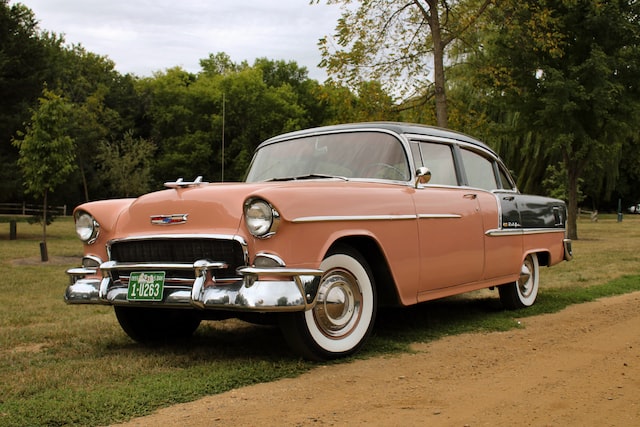Imagine feeling excited with anticipation for a long road trip with your best friends that you’ve always wanted to take. Then you discover you’re the only one who knows how to drive. You have a 1000-kilometer journey ahead of you. The road is virtually straight for hundreds of kilometers, and the thought of driving for 4-5 hours straight exhausts you even before you get behind the wheel. Fortunately, cruise control comes to the rescue at this time.
In today’s cars, cruise control is a must-have feature. Long vehicle trips would be significantly more exhausting without it, at least for the driver. Because American highways are generally larger and straighter, and destinations are significantly farther apart, cruise control is far more widespread in American cars than in European or Asian cars.

What is Cruise Control?
When you’re driving at a constant speed, cruise control in-car comes in useful. It’s an electric system that allows you to set your car’s speed and then remove your foot from the accelerator pedal. As a result, it can help with foot tiredness and stress during long drives. Another significant advantage of utilizing cruise control is that you will save money on gas. If you cruise at a constant speed rather than accelerate at each bend in the road, you will save a lot of gas. When you accelerate quickly, your engine expends more energy, and you could consume 60% more fuel than someone who uses cruise control. Finally, allowing your vehicle to keep a constant cruising speed is a simple way to save money on gas.
Adaptive cruise control is the cutting edge of cruise control today. Almost all cars will be equipped with this smart system in the near future. Adaptive cruise control, like conventional cruise control, allows you to specify a desirable travel speed. The adaptive cruise control, on the other hand, uses forward-mounted sensors to keep a safe distance between you and the vehicle in front of you at a consistent speed. If the vehicle ahead of you begins to slow, adaptive cruise control will utilize the engine brake to automatically lower your vehicle’s speed and maintain the distance set. Many people believe that adaptive cruise control is the first step toward autonomous vehicles in the future. However, because you must maintain your hands on the wheel and be completely aware of the road, it is not totally autonomous driving.
How does cruise control work?
The cruise control system adjusts the throttle (accelerator) position just like you do to manage the speed of your car. Instead of pushing a pedal, cruise control engages the throttle valve via a cable connected to an actuator. Because it’s an internal combustion engine, the throttle valve limits how much air it takes in, which controls the engine’s power and speed.
The cruise control can be set via the cruise switches, which typically include ON, OFF, RESUME, SET/ACCEL, and COAST. These are usually found on the steering wheel, the windshield wiper stalk, or the turn signal stalk. The SET/ACCEL knob controls the vehicle’s speed. One tap will increase the speed by 1 mph, two taps will increase the speed by 2 mph, and so on. Deceleration is achieved by turning the knob in the opposite direction. The cruise control system will disconnect as soon as you press the brake pedal as a safety feature.
Read more >> How To Refill Windshield Wiper Fluid?
When do you use cruise control?
On fast, empty roads like highways or A-roads, where you can maintain the same speed for miles at a time, a basic cruise control system works best. It can be tedious to continuously turn it on and off, and you’ll often find that using simpler methods is more trouble than simply managing the speed manually.
As a result, it’s not ideal for driving in crowded areas with changing speed limits or on winding roads with many turns. Unless you have adaptive cruise control (see below), you’ll generally find it easier to manually manage your speed or utilize a speed limiter, which is commonly included in cruise control vehicles.
It’s not a good idea to utilize cruise control late at night because having nothing to do behind the wheel when you’re tired can lead to concentration problems.
How to Use Cruise Control?
- Step 1
To begin, examine the interstate driving conditions. Cruise control is not intended to be utilized in poor weather. When deciding whether or not to use your vehicle’s cruise control, use caution. Before using cruise control, be sure there are no approaching obstacles, especially if it’s your first time.
- Step 2
Increase your speed. The speed limit on the interstate is usually between 55 and 70 miles per hour. For cruise control, this speed range is good. Do not try to set your cruise control to a speed that is higher than the legal limit. This is both risky and unwise.
- Step 3
Turn on the cruise control system once you’ve reached your desired speed. The cruise control system is controlled via buttons on the steering wheel in most automobiles. To avoid an accident, review your owner’s manual and locate these buttons when the car is not in use.
- Step 4
Set the cruise control after the cruise control system has been activated. It’ll probably just be a matter of pressing another button on the steering wheel. Remove your foot off the accelerator when the cruise control has been set. The vehicle should maintain its current speed.
- Step 5
It is critical to keep a close eye on the road when driving a vehicle that is being accelerated by a cruise control system. Because you must deactivate the cruise control system before slowing or stopping, your reaction time will be delayed.
- Step 6
Most vehicles will either have additional buttons or allow the driver to temporarily engage the accelerator pedal while on cruise control.
- Step 7
To slow down, either use the cruise control system’s appropriate button or immediately use the brake. Almost every kind of vehicle will deactivate cruise control as soon as the brake is applied as a safety precaution.
Read more >> How to Drive Through Car Wash – A Beginner’s Guide
When traveling on the freeway, cruise control is a great way to keep your speed under control. By eliminating unexpected accelerations and decelerations, setting your vehicle’s cruise control to a normal speed will also help you save money on gas. If you are likely to have driver tiredness, you should avoid using cruise control. Many drivers believe that being able to relax their legs while driving and not having to constantly control their speed reduces their chances of being fatigued while driving.
If you are planning to take a driver’s license, visit our website and take our free DMV practice test to easily pass your exam, or download it for your IOS or Android devices now!

UT Utah License Renewal: A 2025 Comprehensive Guide
Discover the ultimate guide to Utah license renewal! This comprehensive guide delves into the intricacies of renewing your driver's license in Utah,...
February 13, 2023

South Carolina S.C. Driver's License Renewal
The South Carolina S.C. driver's license renewal process is designed to be comprehensive, taking into consideration eligibility requirements, renewal methods,...
February 13, 2023

Pennsylvania PA DMV License Renewal: A 2025 Full Guide
The Pennsylvania PA DMV license renewal process is designed to be comprehensive, taking into consideration eligibility requirements, renewal methods,...
February 10, 2023

